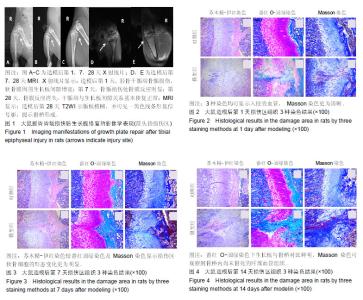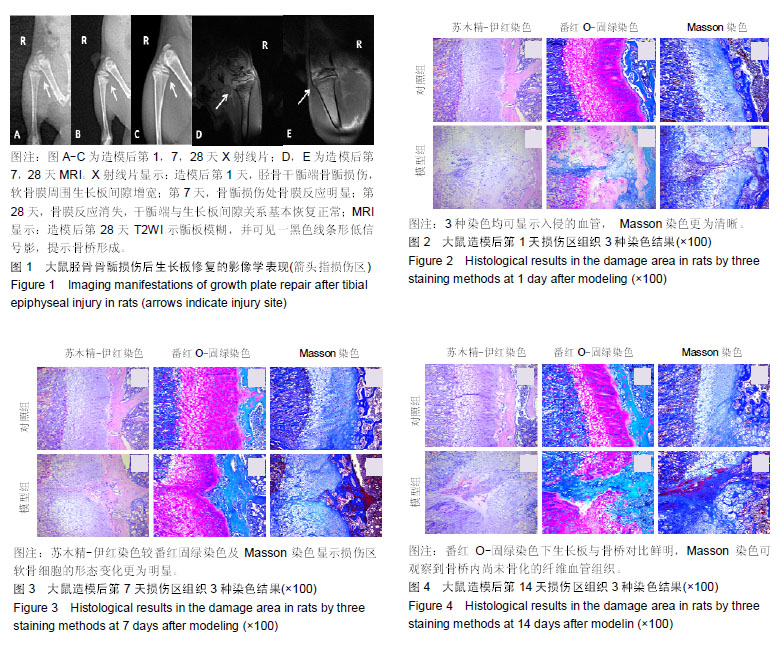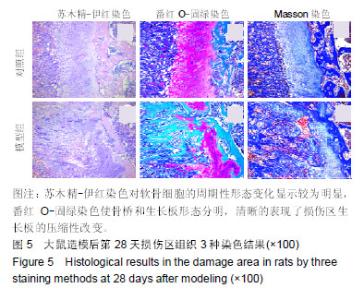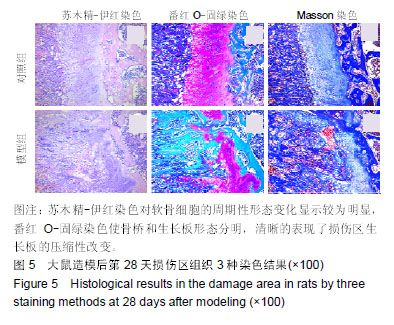| [1]Chung R , Foster BK , Xian CJ. Injury responses and repair mechanisms of the injured growth plate. Front Biosci (Schol Ed). 2011;3:117-125. [2]Li W,Xu R,Huang J,et al. Treatment of rabbit growth plate injuries with oriented ECM scaffold and autologous BMSCs. Sci Rep.2017;7:44140. [3]Brown JH,Deluca SA.Growth plate injuries: Salter-Harris classification. American Family Physician. 1992;46(4):1180.[4]Basener CJ,Mehlman CT,Dipasquale TG . Growth disturbance after distal femoral growth plate fractures in children: a meta-analysis. J Orthop Trauma. 2009;23(9):663-667. [5]Chung R ,Foster B K , Xian CJ .The potential role of VEGF-induced vascularisation in the bony repair of injured growth plate. J Endocrinol. 2014 ;221(1):63-75.[6]颉强,胡蕴玉,杨柳,等.大鼠胫骨近端骨骺损伤后骨桥形成分子机制的研究[J]. 生物化学与生物物理进展, 2008, 35(9):1039-1045.[7]Lee MA , Nissen TP , Otsuka NY.Utilization of a Murine Model to Investigate the Molecular Process of Transphyseal Bone Formation. J Pediatr Orthop. 2000;20(6):802-806. [8]Macsai CE ,Hopwood B, Chung R, et al. Structural and molecular analyses of bone bridge formation within the growth plate injury site and cartilage degeneration at the adjacent uninjured area. Bone. 2011;49(4):904-912 Bone. [9]Musumeci, Giuseppe, Castrogiovanni, et al. Post-Traumatic Caspase-3 Expression in the Adjacent Areas of Growth Plate Injury Site: A Morphological Study. Int J Mol Sci. 2013;14(8):15767-15784. [10]Xian CJ, Zhou FH, Mccarty RC, et al. Intramembranous ossification mechanism for bone bridge formation at the growth plate cartilage injury site. J Orthop Res. 2004 Mar;22(2):417-426. [11]Chung R, Xian CJ. Recent research on the growth plate: Mechanisms for growth plate injury repair and potential cell-based therapies for regeneration. J Mol Endocrinol. 2014;53(1):T45-61.[12]Isaksson H,Wilson W,Donkelaar CC , et al. Comparison of biophysical stimuli for mechano-regulation of tissue differentiation during fracture healing. J Biomech. 2006;39(8):1507-1516. [13]Cardiff RD , Miller CH , Munn RJ . Manual hematoxylin and eosin staining of mouse tissue sections. Cold Spring Harbor Protocols.2014; 2014(6):655.[14]Feldman AT, Wolfe D. Tissue processing and hematoxylin and eosin staining. Methods Mol Biol. 2014;1180:31-43. [15]黄云梅,陈文列,黄美雅,等. 多种特殊染色法在骨关节炎组织形态学研究中的应用比较[J].中国比较医学杂志, 2011, 21(5):45-48. [16]Rosenberg L.Chemical basis for the histological use of safranin O in the study of articular cartilage. J Bone Joint Surg Am. 1971;53(1):69-82.[17]Eggert FM,Linder JE,Jubb RW.Staining of demineralized cartilage.Histochemistry.1981; 73(3):391-396.[18]Ji H,Li J,Shao J.Histopathologic comparison of condylar hyperplasia and condylar osteochondroma by using different staining methods. Oral Surg Oral Med Oral Pathol Oral Radiol. 2017;123(3):320-329. [19]Garvey W . Modified Elastic Tissue-Masson Trichrome Stain. Stain Technology.1984;59(4):4.[20]Suvik A, Effendy AWM .The use of modified Masson’s trichrome staining in collagen evaluation in wound healing study. Journal of Neurosurgery. 2012; 3(1):39-47. [21]吕学敏,胡浩,鲁明,等.骨骺损伤修复过程中骺板形态及VEGF表达的变化[J].中华骨科杂志,2012, 32(6):570-575. [22]贺今,纪春岩.NOTCH、VEGF信号通路在急性髓性白血病发生及血管新生中的作用[J].中国临床研究, 2016,29(4):558-559.Hernandez SL,Banerjee D, Garcia A,et al. Notch and VEGF pathways play distinct but complementary roles in tumor angiogenesis.Vascular Cell.2013;5(1):17. |



